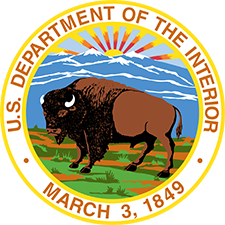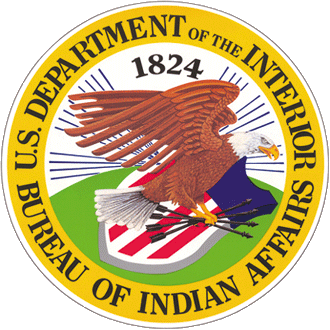The Bureau of Indian Affairs (BIA) Branch of Tribal Community Resilience (TCR) strives to fulfill the United States’ trust and treaty obligations to federally-recognized Tribal Nations and Alaska Native Villages and commits to advancing Tribal sovereignty and self-determination. To this end, TCR provides financial, technical, and coordination assistance to Tribal communities in their community-driven relocation (CDR) initiatives and other CDR strategies through both the Voluntary Community-Driven Relocation Program and the TCR Annual Awards Program.
The Voluntary Community-Driven Relocation Program
The Voluntary Community-Driven Relocation Program, also referred to as the “CDR Program,” is a federal program that assists Tribal communities who are ready to implement voluntary community-driven relocation plans, as well as Tribal communities who are engaged in CDR planning.
The CDR Program is supported and implemented by the BIA, the Federal Emergency Management Agency (FEMA), the Denali Commission, and other partnering federal, state, and local agencies. It is one of the first federal programs designed to work closely with community leaders to assist with planned relocation efforts driven by climate change impacts.
All projects are Tribally-led. At the direction of the Tribal communities, TCR assists with coordinating implementation and local support teams, provides financial and technical assistance to support Tribal strategies, and assists with coordination to match communities with federal financial and technical assistance. TCR regional coordinators support program award officials and serve as communities’ main points of federal contact.
Participating Tribal communities and their CDR project coordinators are also invited to take part in additional training and are provided with a forum for knowledge exchange and mutual support.
Demonstration Projects
As of 2022, CDR Program participants include three Tribal communities ready for voluntary community-driven relocation implementation and eight Tribal communities engaged in CDR strategic planning.
The efforts undertaken by these 11 communities through the program will allow Tribal communities and their partners to develop standard guidelines for future Tribal community resilience projects. For this reason, their initiatives are referred to as demonstration projects.
The Tribal communities ready for voluntary community-driven relocation implementation include:
- Native Village of Napakiak, located on the Ninglick River in Alaska;
- Newtok Village, located on the Kuskokwim River in Alaska; and
- Quinault Indian Nation, located on the Olympic Peninsula in Washington.
The Tribal communities engaged in CDR strategic planning include:
- Huslia Village, located in Alaska’s Unorganized Borough;
- Native Village of Fort Yukon, located at the confluence of the Yukon River and the Porcupine River in Alaska;
- Native Village of Nelson Lagoon, located on the northern coast of the Alaska Peninsula;
- Native Village of Point Lay, located above the Arctic Circle in northwest Alaska;
- Chitimacha Tribe of Louisiana, located in the St. Mary Parish area of south-central Louisiana;
- Havasupai Tribe, located in and around the Grand Canyon;
- Passamaquoddy Indian Tribe in Pleasant Point, located in the Dawnland region of northeast Maine; and
- Yurok Tribe, adjacent to the Redwood National Forest in Northern California.
With input from Tribal communities and in collaboration with the Branch of Geospatial Support (BOGS), TCR has created an ArcGIS StoryMap that explores each Tribal community’s cultural and historical context, environmental threats, resilience plans, and federal funding sources in an interactive and multimedia format.
What Would You Like to Do?
Additional Information
Additional Resources
Contact Us
Albuquerque, NM 87104


